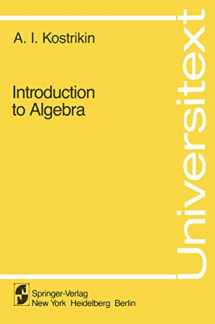
Introduction to Algebra (Universitext)
Book details
Summary
Description
This textbook, written by a dedicated and successful pedagogue who developed the present undergraduate algebra course at Moscow State University, differs in several respects from other algebra textbooks available in English. The book reflects the Soviet approach to teaching mathematics with its emphasis on applications and problem-solving -- note that the mathematics department in Moscow is called the I~echanics-Mathematics" Faculty. In the first place, Kostrikin's textbook motivates many of the algebraic concepts by practical examples, for instance, the heated plate problem used to introduce linear equations in Chapter 1. In the second place, there are a large number of exercises, so that the student can convert a vague passive understanding to active mastery of the new ideas. Thes~ problems are intended to be challenging but doable by the student; the harder ones have hints at the back of the book. This feature also makes the book ideally suited for learning algebra on one's own outside of the framework of an organized course. In the third place, the author treats material which is usually not part of an elementary course but which is fundamental in applications. Thus, Part II includes an introduction to the classical groups and to representation theory. With many American colleges now trying to bring their undergraduate mathematics curriculum closer to applications, it seems worthwhile to translate Soviet textbooks which reflect their greater experience in this area of mathematical pedagogy.


We would LOVE it if you could help us and other readers by reviewing the book
Book review



